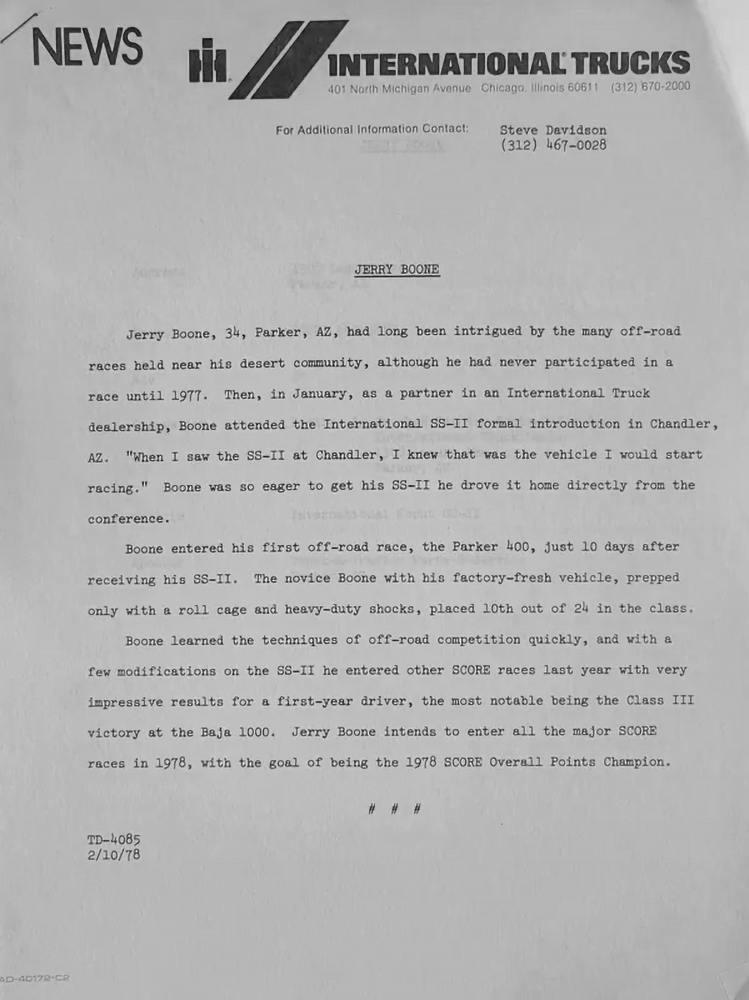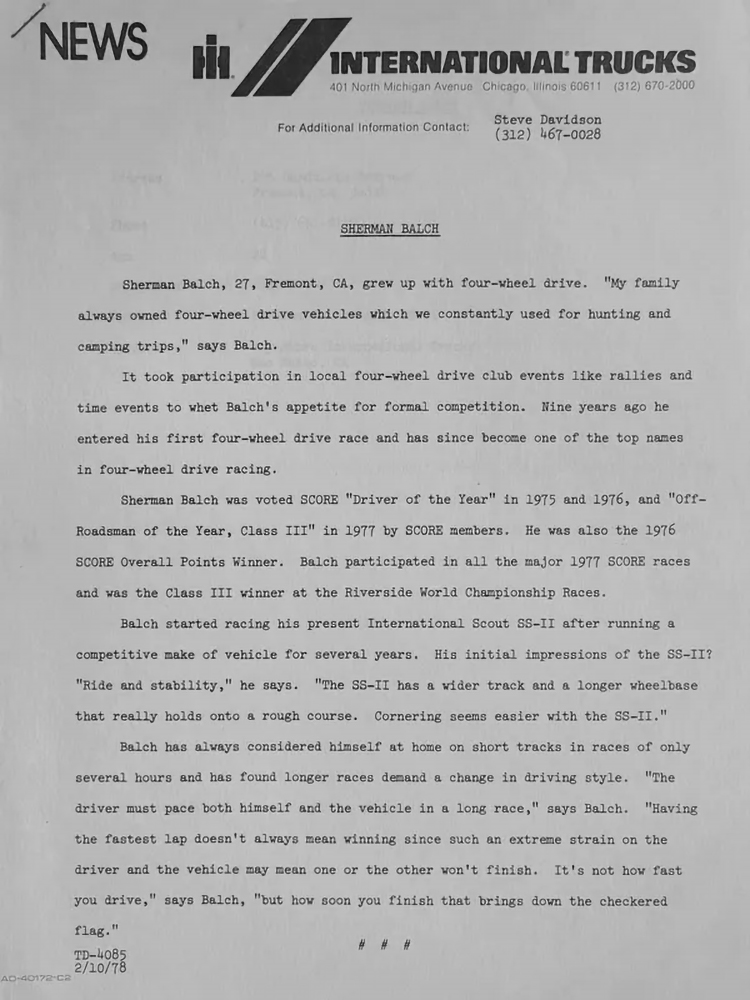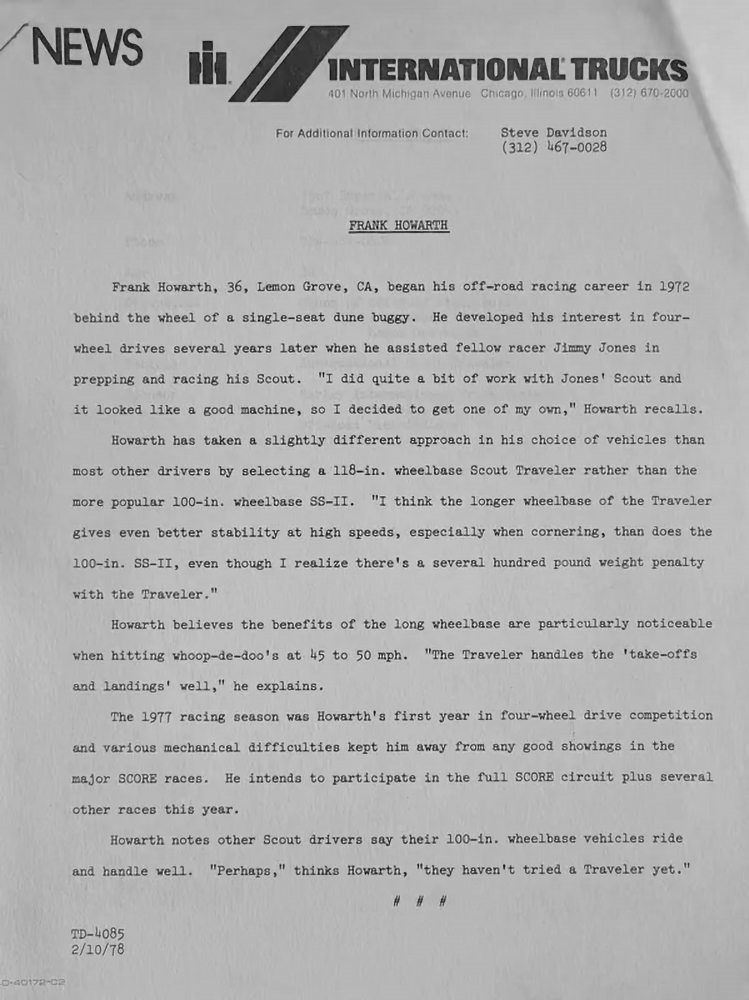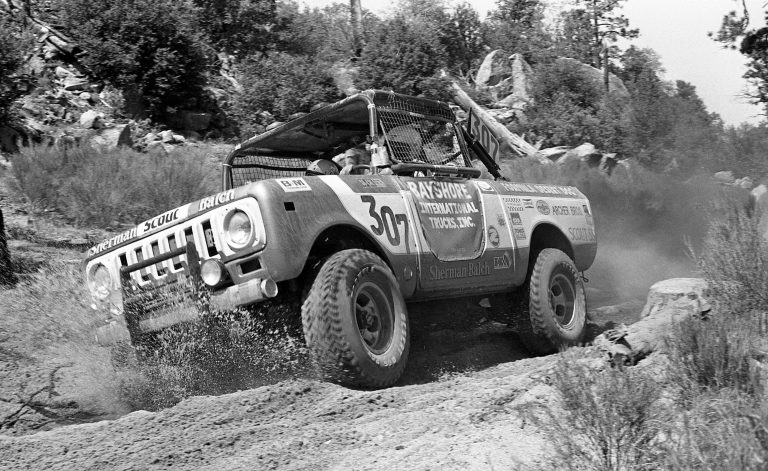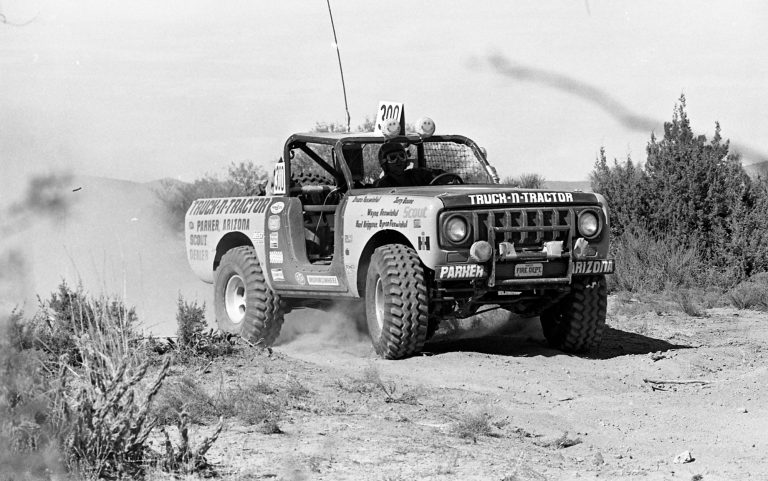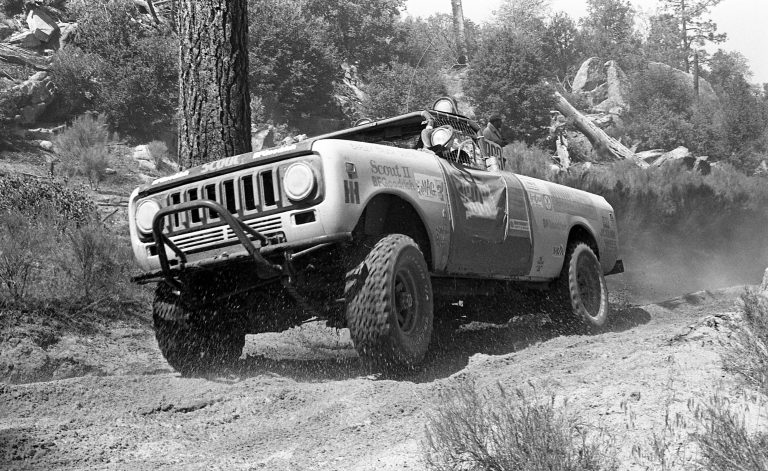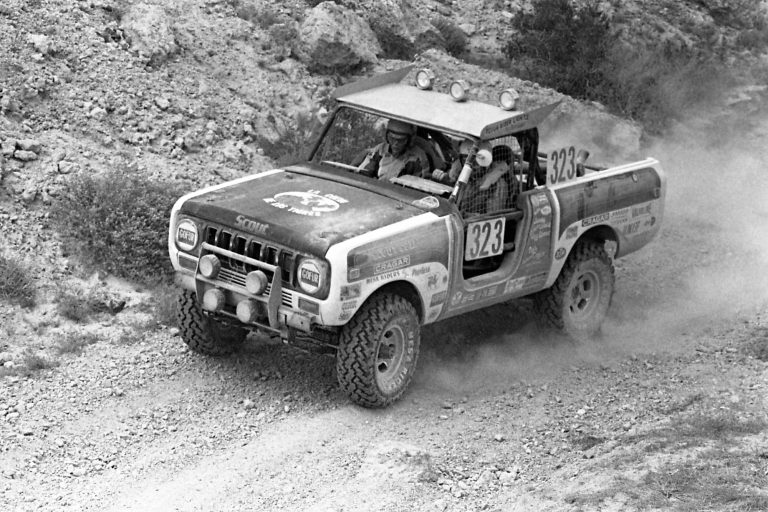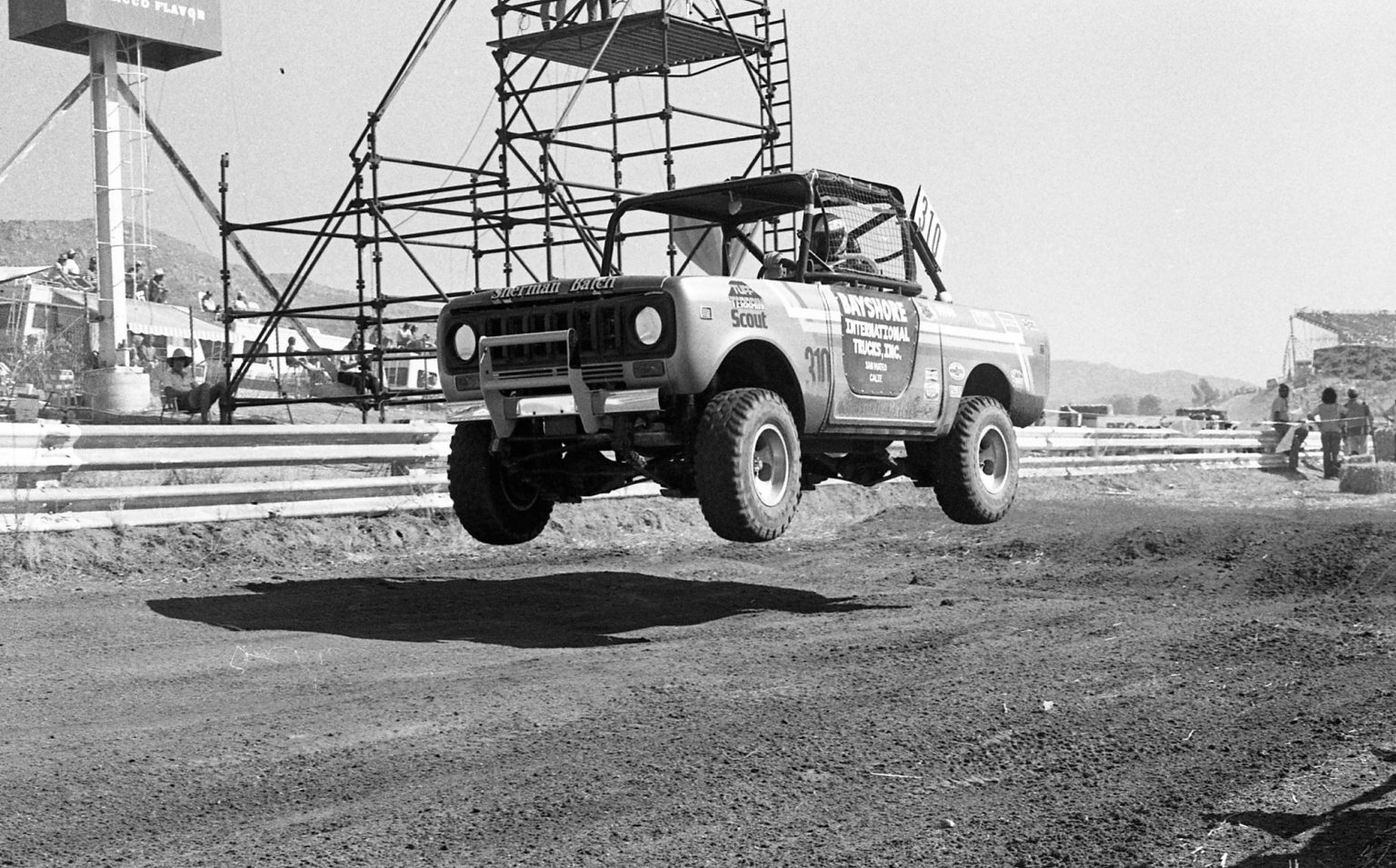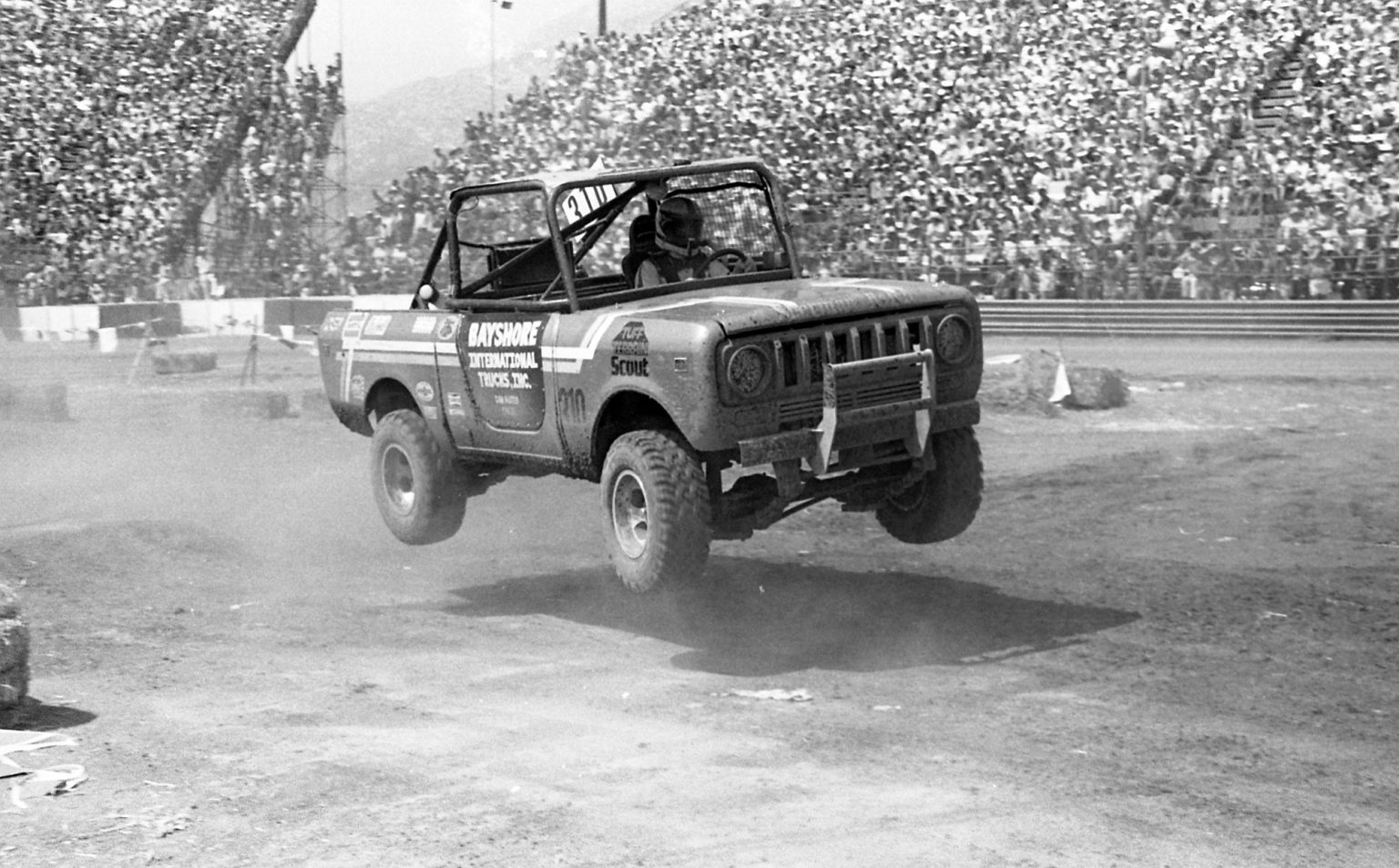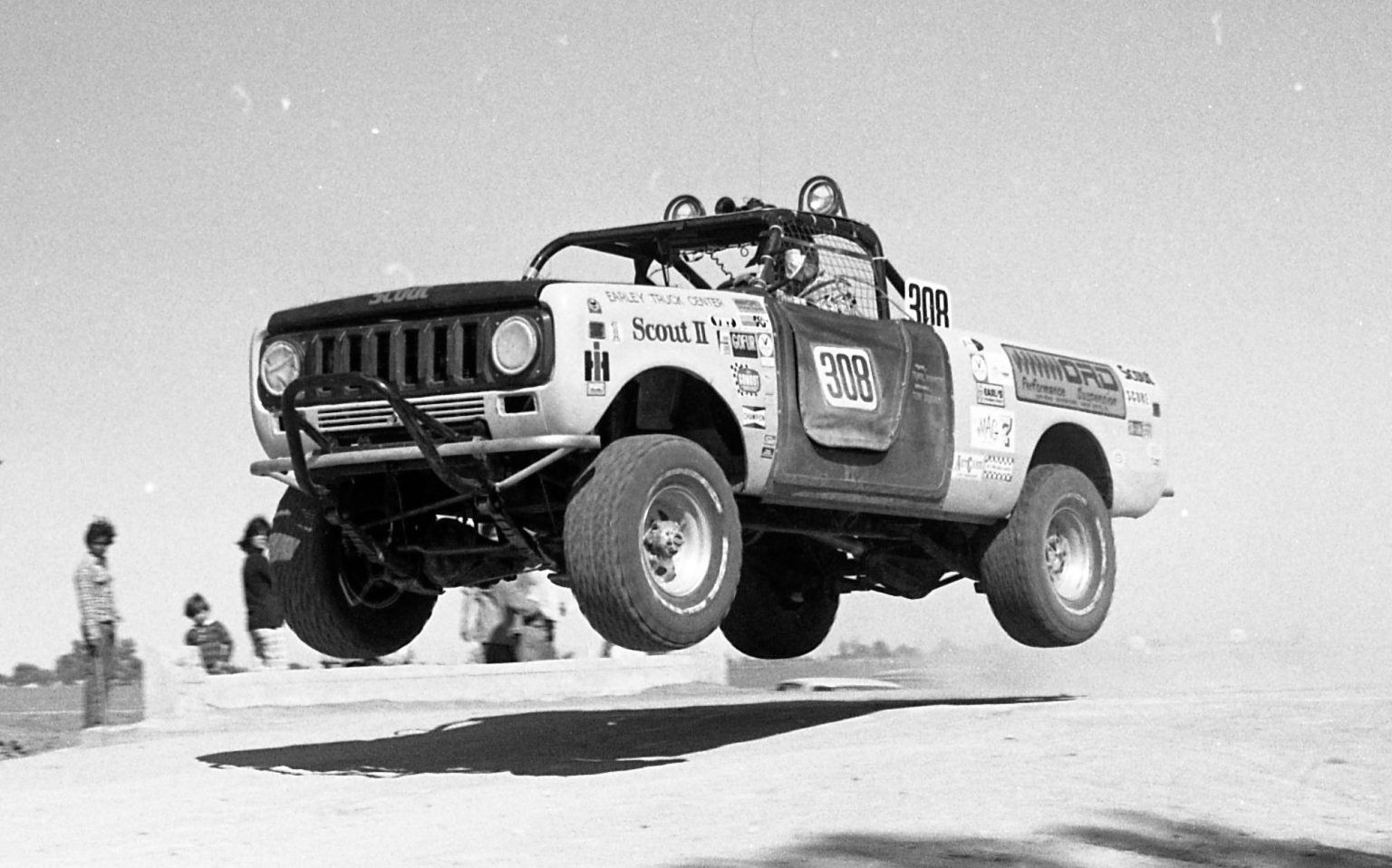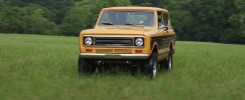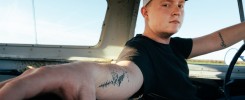WORDS: Christian Glazar & Gray Van Dyke IMAGES: TRACKSIDE PHOTO, BOONE FAMILY ESTATE, & WISCONSIN HISTORICAL SOCIETY
he growing popularity of the original Scout® vehicle coincided with the rising prominence of desert-style offroad racing in the late ’60s and early ’70s, beamed into American homes through national broadcasts like ABC’s Wide World of Sports®. The Scout SUV, already an off-road icon, was well positioned to capitalize on the trend when a privately-owned 800A marked the brand’s desert-racing debut in the 1969 Baja 1000®.
Still, it took some time and effort to get the company on board with a full factory-supported racing program. According to Jim Allen and John Glancy in the International Scout Encyclopedia, it was “an uphill battle getting the conservative, tightfisted, ag-centric board at International to run with it.” It took a class win from a privateer, the persistence of the marketing department, and some well-orchestrated stagecraft from Ted Ornas, the leader of the Styling Department at International Harvester and one of the Scout brand’s leading advocates.
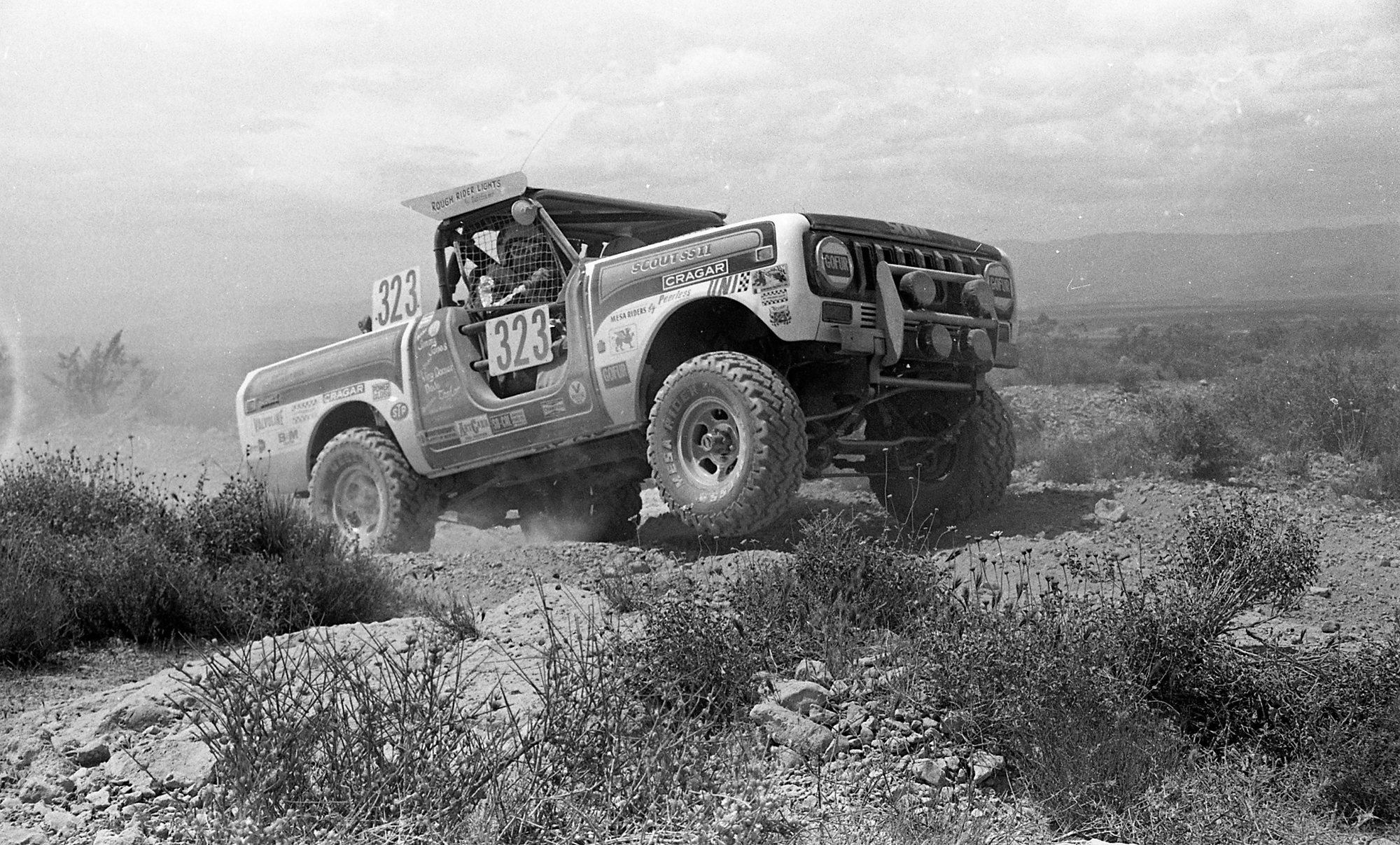
The first Scout racer
Jimmy Ray Jones had initially acquired his 1969 Scout 800A V8 truck as a practical family vehicle. However, the racer in him quickly recognized its off-road potential. After he’d started campaigning it around San Diego County and realized “it beat the pants off the local competition,” Jones set out to prove that this unassuming truck was anything but pedestrian and entered it in the 1969 Baja 1000 — uncharted territory, as no one had attempted the race in a Scout truck before. Finishing 13th in a race where high attrition is the norm, Jones was convinced he could accomplish even more and transformed the truck into a full-on race rig, fitting it with an overhead roll cage, mounting larger tires, swapping the signature front end, and shaving weight wherever possible.
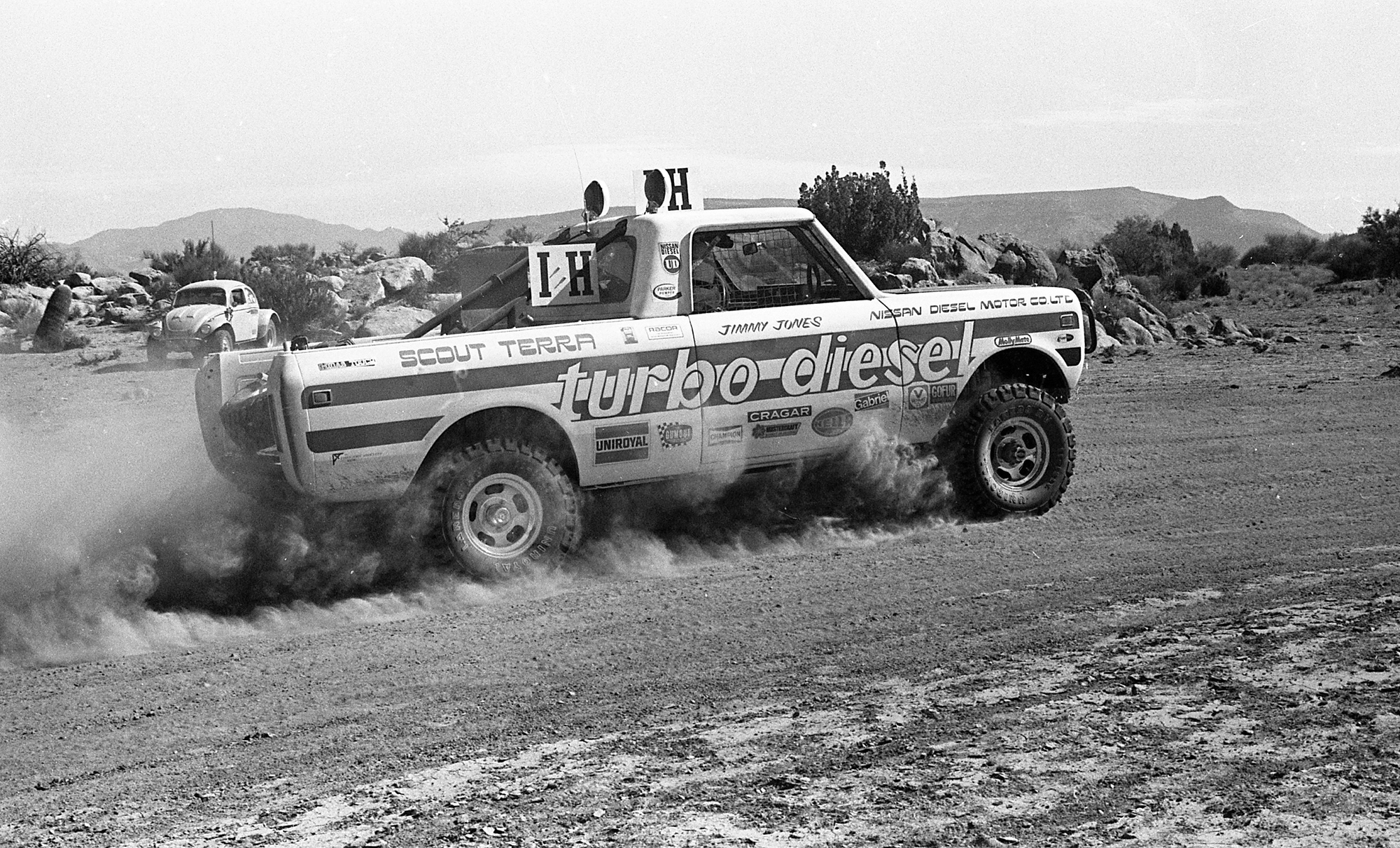
With its combination of lightness, mechanical simplicity, and Jones’ skill behind the wheel, the Baja Binder had proved itself and—by extension— International as a brand.
At the launch of the Scout II™ model in 1972, Jones realized it was time for an upgrade. He ordered an orange two-wheel drive Cabtop — a bold choice in a class dominated by 4x4s. Jones knew that losing weight from the drivetrain would be the key to overall performance in the dirt. Leaving the stock 258ci straight-six engine and T-406 automatic transmission in place, he fitted the truck with only a few upgrades: beefed-up suspension, an Offenhauser four-barrel intake, and a set of Hooker headers. The Baja Binder was born.
That year, Jones returned to the Baja 1000 in his new entry and drove the two-wheel drive Scout II truck to first place in its class. With its combination of lightness, mechanical simplicity, and Jones’ skill behind the wheel, the Baja Binder had proved itself and—by extension— International as a brand. With newfound prospective glory in their sites, International Harvester’s marketing department finally took notice.
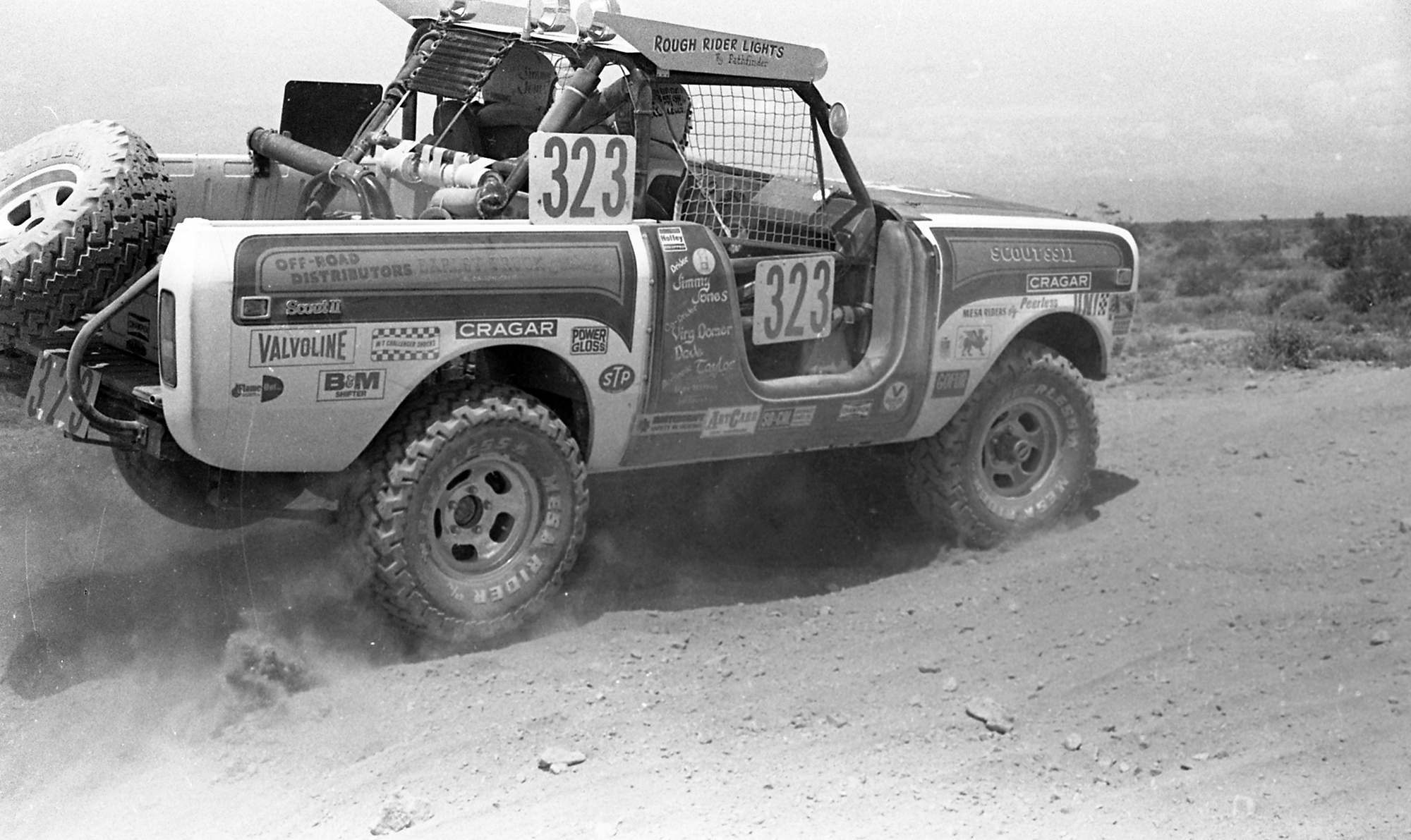
A factory team is born
Though confident in Jones’ potential to boost sales, the marketing team first needed to convince company brass that racing success would create a halo effect, lending prestige and credibility to the models on the showroom floor. To drive the point home,Ted Ornas, Head of Styling at International Harvester—and visionary behind the Scout truck design—staged a photo that captured the thrill of an imagined victory: an exhausted Scout driver climbs from the cockpit of his race-winning Super Scout II truck to accept his trophy in front of an adoring crowd. “The exhausted driver receiving the winner’s trophy is me, and the enthusiastic cheering crowd of spectators are members of my styling group,” wrote Ornas. “Gentlemen,” he told management, “after seeing first-hand the tremendous crowds and competitive vehicles at the Baja 1000, my dream is to win the Baja 1000 with our product.”
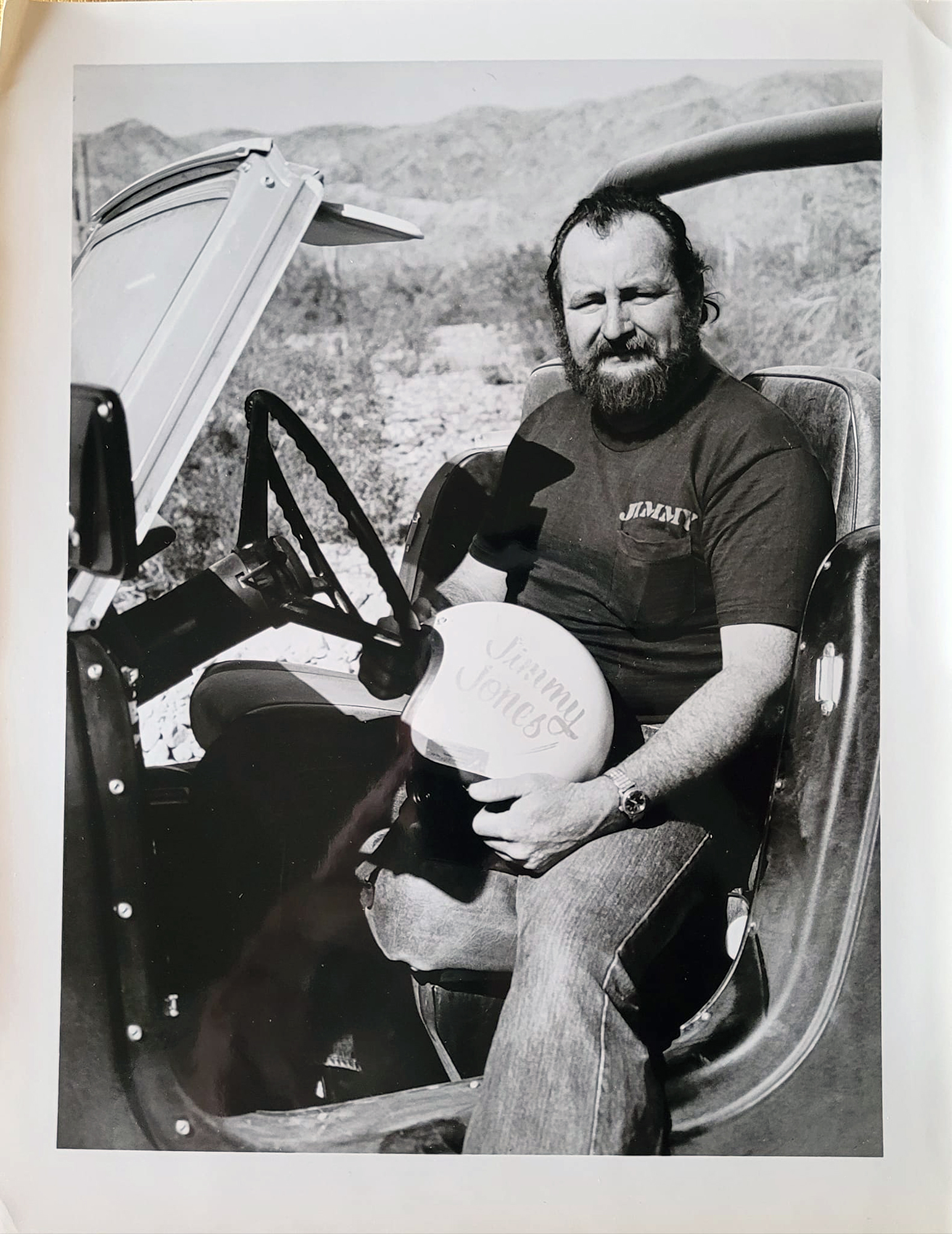
Management was convinced, and Jones was the first official racer signed to the newly created factory team. International sold him a new 1976 4×4 Scout V8 truck for a dollar, then sweetened the deal with all of the pieces needed to turn his truck into a bona fide pre-production Super Scout II truck. Jones worked with local fabrication specialist (and eventual factory teammate) Frank Howarth to fit his new and improved Baja Binder with a front shackle reversal, added travel, 35-inch Desert Dog tires, and extra reinforcement throughout the chassis and axles.
The Baja Binder tackled the dunes until 1979, when International approached Jones with a proposal to promote the new Scout Terra™ pickup and its fuel-efficient turbodiesel engine by racing it in the Baja 1000. Jones enlisted Howarth once again to ready the truck for Baja duty, and as a publicity stunt, Jones drove the barely street-legal rig from La Mesa, California, to the starting line in Ensenada, Mexico, completed the race in La Paz, and then drove it home. He averaged an impressive 13 miles per gallon during the race, besting that number with an 18.25 mpg average on the more leisurely drive home.
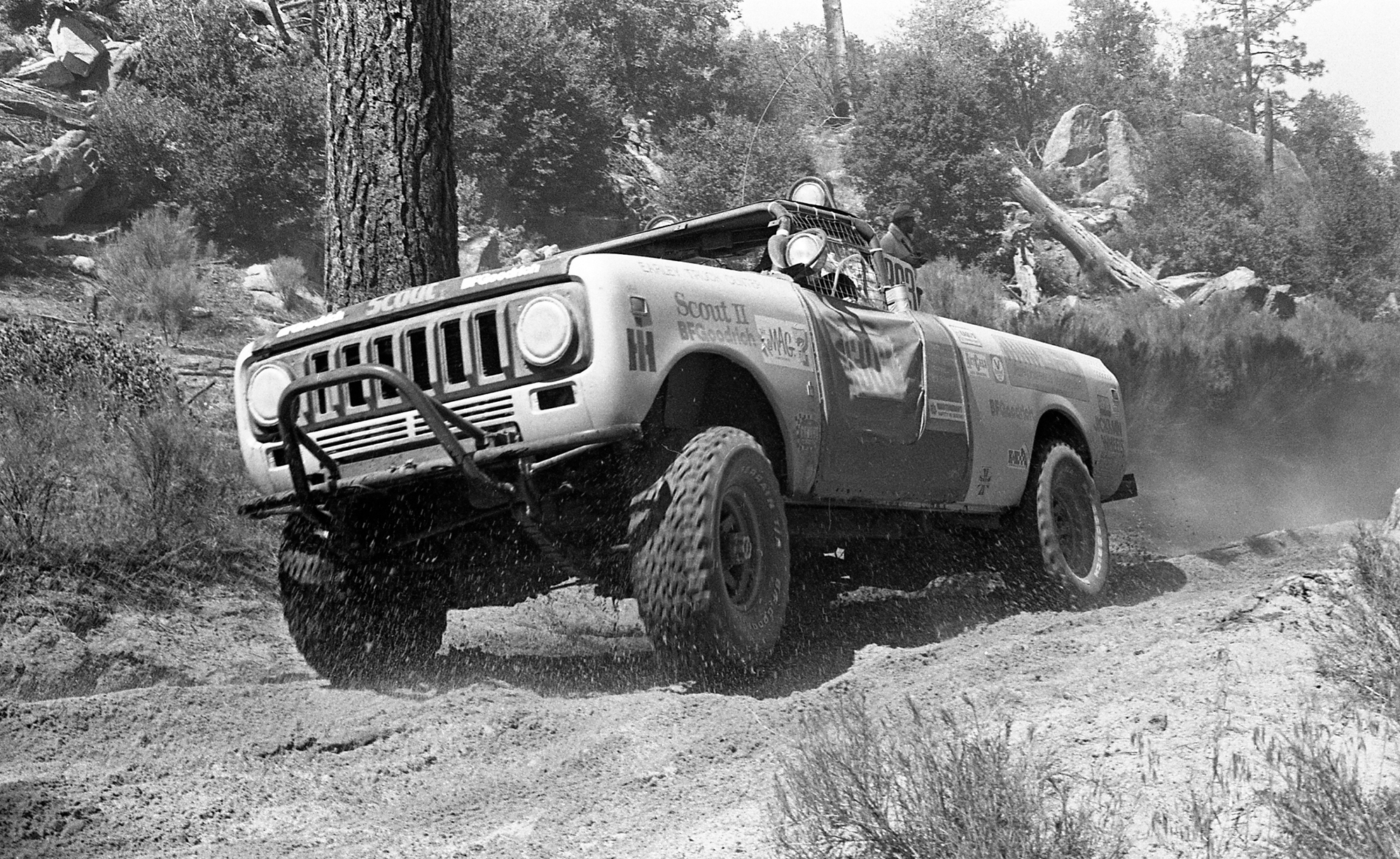
Of all of the International Harvester factory-sponsored drivers, Sherman Balch was the squad’s most decorated competitor. Having built a full-blown Class III Jeep® CJ-5 in 1972, he put in a dominant performance in the Mint 400®, becoming the youngest driver ever to win his class. In 1976, along with winning the SCORE® Baja 1000, he also took home the Riverside World Crown as well as the SCORE Points Champion and SCORE Driver of The Year titles. It was a performance that caught the eye of International, earning him a seat on the factory team.
He made his debut for the team at the 1977 Parker 400, running a Traveltop racer he’d owned for all of two months. A blown transmission seal ended that initial effort with a DNF, and a string of mechanical failures kept the pattern going throughout the early season. But Balch broke through at the 1977 SCORE Riverside Championship, where he took a commanding lead and never let go. He celebrated the victory with a complete overhaul of his rig, reversing the suspension shackles, beefing up the steering linkage, and fitting heim joints in place of tie rods. He treated the 345 engine to some 10:1 pistons, ported heads, and a Holley® four-barrel carb, then capped off his new and improved build with a coat of signature green paint. In 1978, he took overall class victories at both the Baja 1000 and Mint 400, establishing International as a real threat in off-road racing.
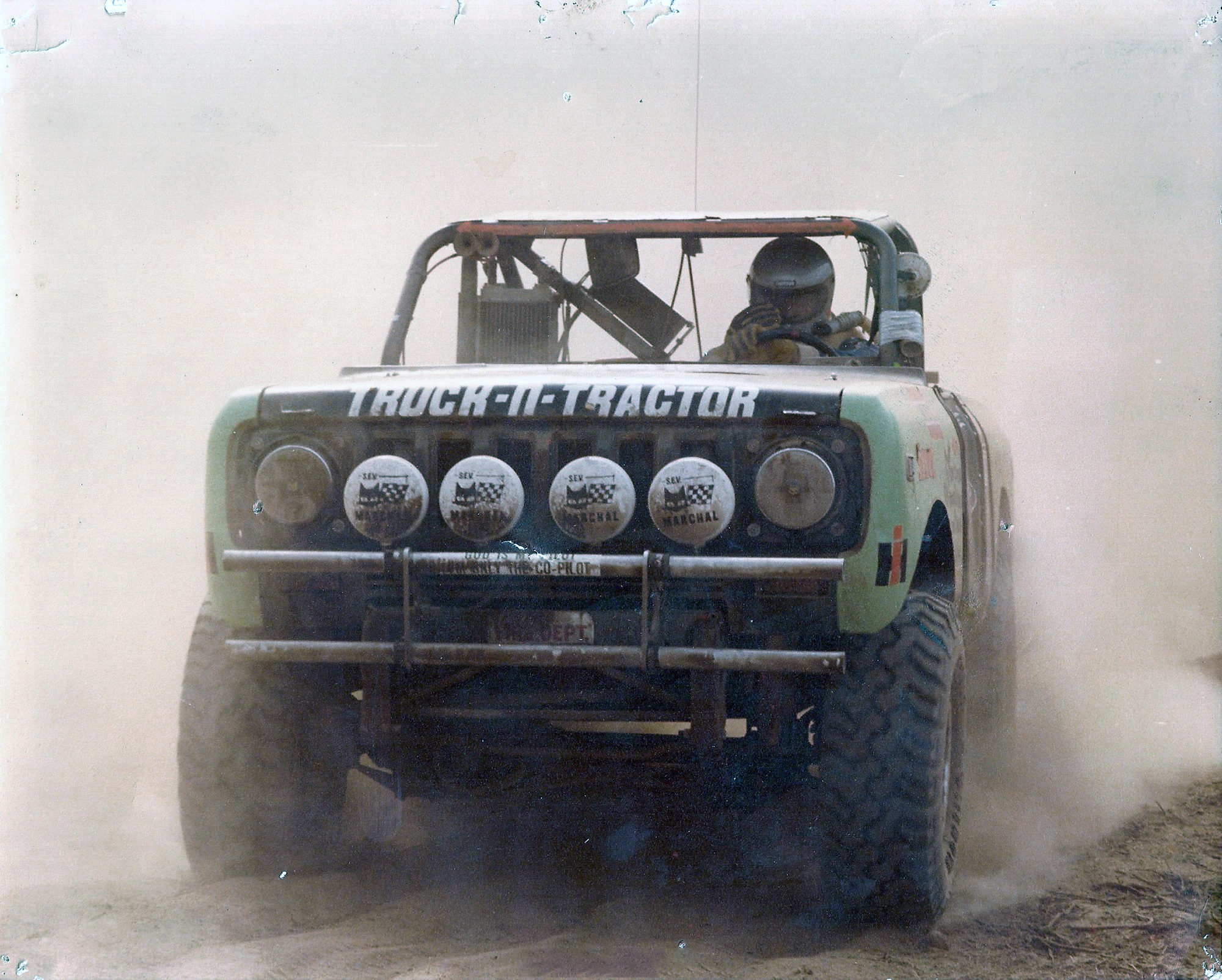
Beat ’em, then join ’em
In 1977, a self-funded rookie racer named Jerry Boone entered the Class III category of the grueling Baja 1000 with a production-spec Super Scout II truck. Along with his in-laws — Wayne, Byron, and Bruce Rexwinkel — Boone had recently opened an International Harvester dealership in Arizona called Truck ‘n’ Tractor. While attending the 1977 Super Scout II product launch in Chandler, Arizona, Boone saw an opportunity to get the Truck ‘n’ Tractor name into the public eye. He purchased a truck that afternoon, drove it to the Truck ‘n’ Tractor garage, and proceeded to race-prep it.
Even though the Truck n’ Tractor Scout racer was running the stock 345 engine, the Rexwinkels came up with the idea to update the Super Scout II truck with reinforced front hubs and custom thin leaf spring packs. Even with a power disadvantage, it could float over bumps at much higher speeds with lower failure rates than the competition. It was a combination that enabled a strong start to Boone’s rookie season, and other teams were quick to notice. The Rexwinkels’ designs soon became common amongst the Baja Scout racers lining the grid.
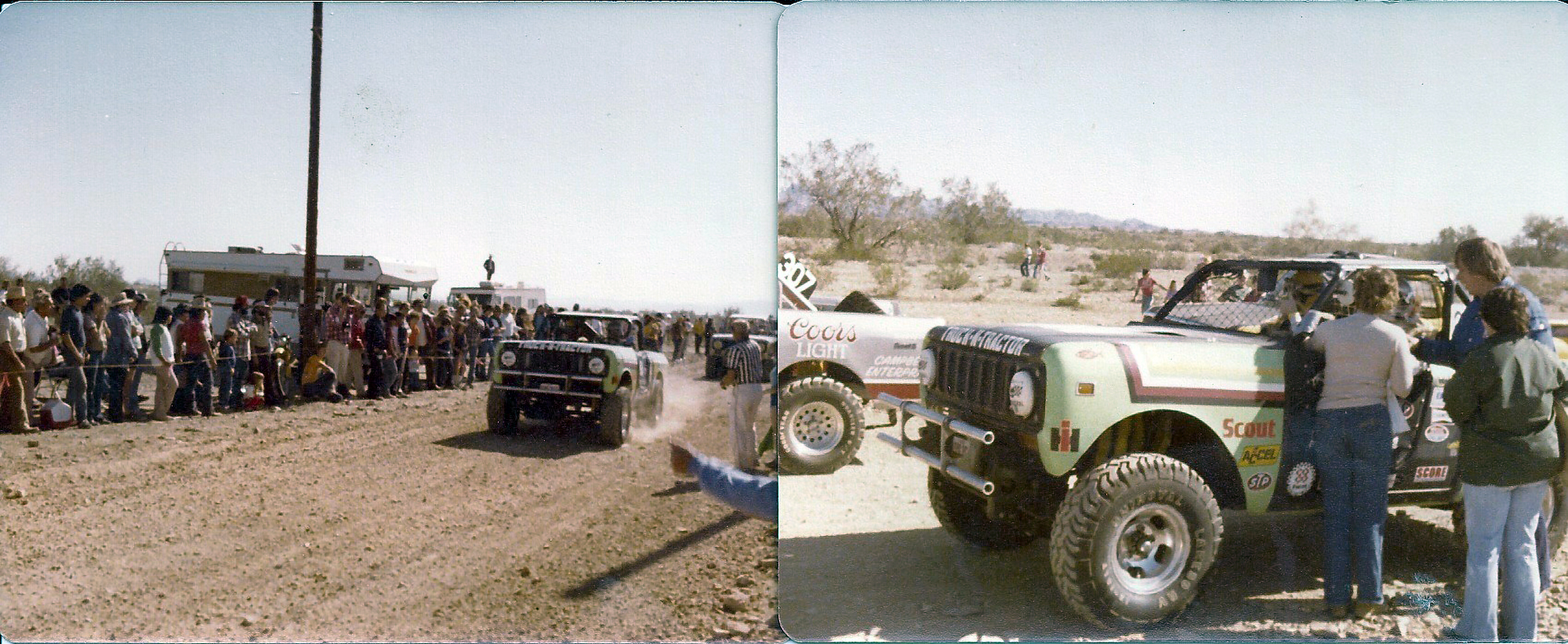
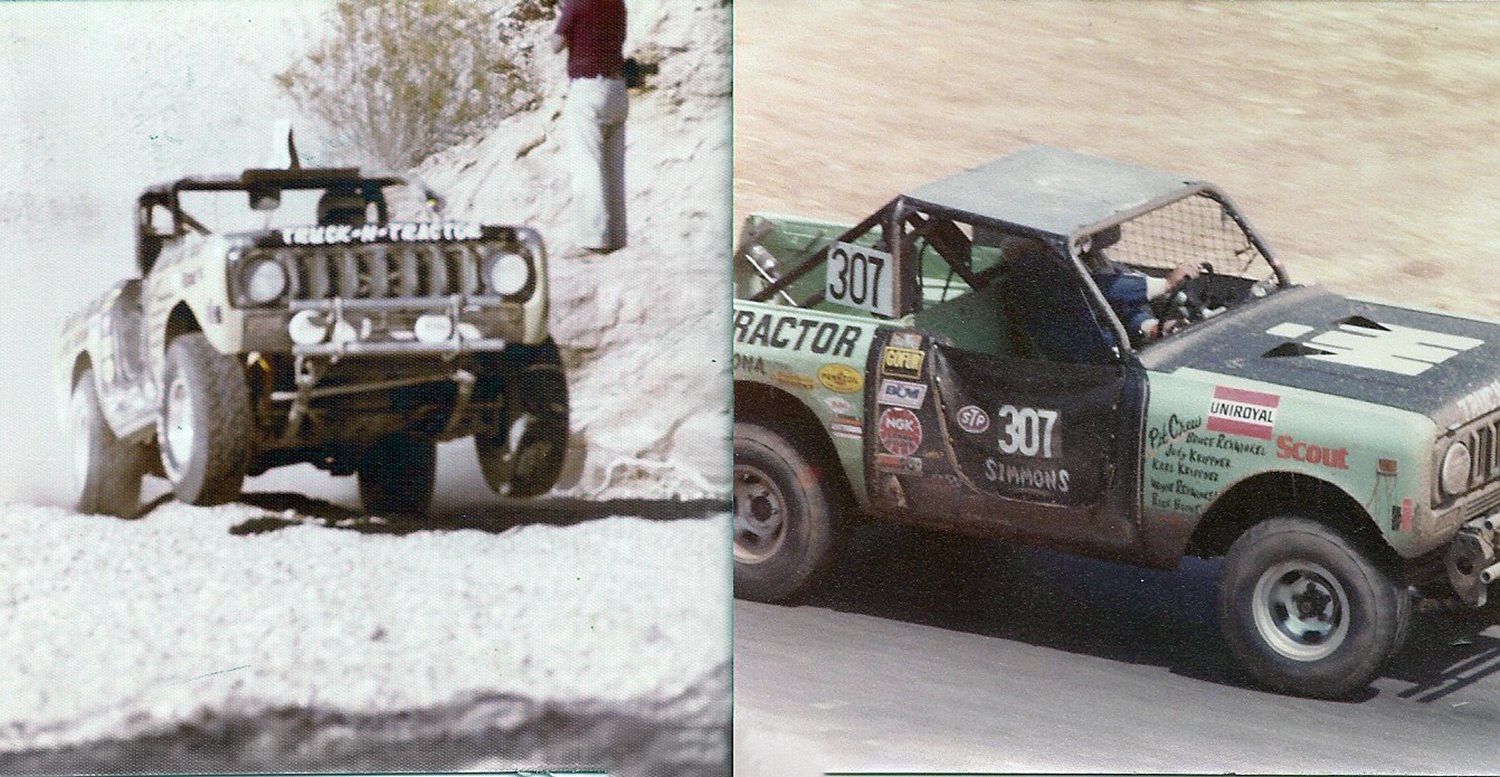
For the Baja 1000, the competition was fierce, including the factory-sponsored Scout racers. Just finishing the race was a significant accomplishment, given only nine of the 21 entrants in Class III managed to do so. Boone not only finished, he bested the second-place Jeep CJ7 by nearly two hours. The performance earned him a call from International Harvester’s Light Truck Marketing Manager, Dick Bakkom. As Boone put it, “After I kicked some of the factory guys’ butts a couple of times, they thought I might be a good addition to the team.”
With a Baja 1000 win under his belt and the advantage of factory support, Boone was set to be an even stronger candidate for the event’s 1978 running. The Truck n’ Tractor Scout racer benefitted from upgraded cams, pistons, and breathing as well as a front shackle reversal. Boone showed early promise and developed a commanding lead; however, an unfortunate sand pit hours from the finish put him second to veteran (and eventual 17-time Baja 1000 winner) Rod Hall in his Dodge® Power Wagon. Boone also campaigned on the short-course racing circuit, winning the SCORE Riverside event in 1978 against a tough field. Then, at Mickey Thomspon’s Off-Road Championship Gran Prix in 1979, Boone took the Class III title in front of 40,000 race fans at the LA Coliseum®.
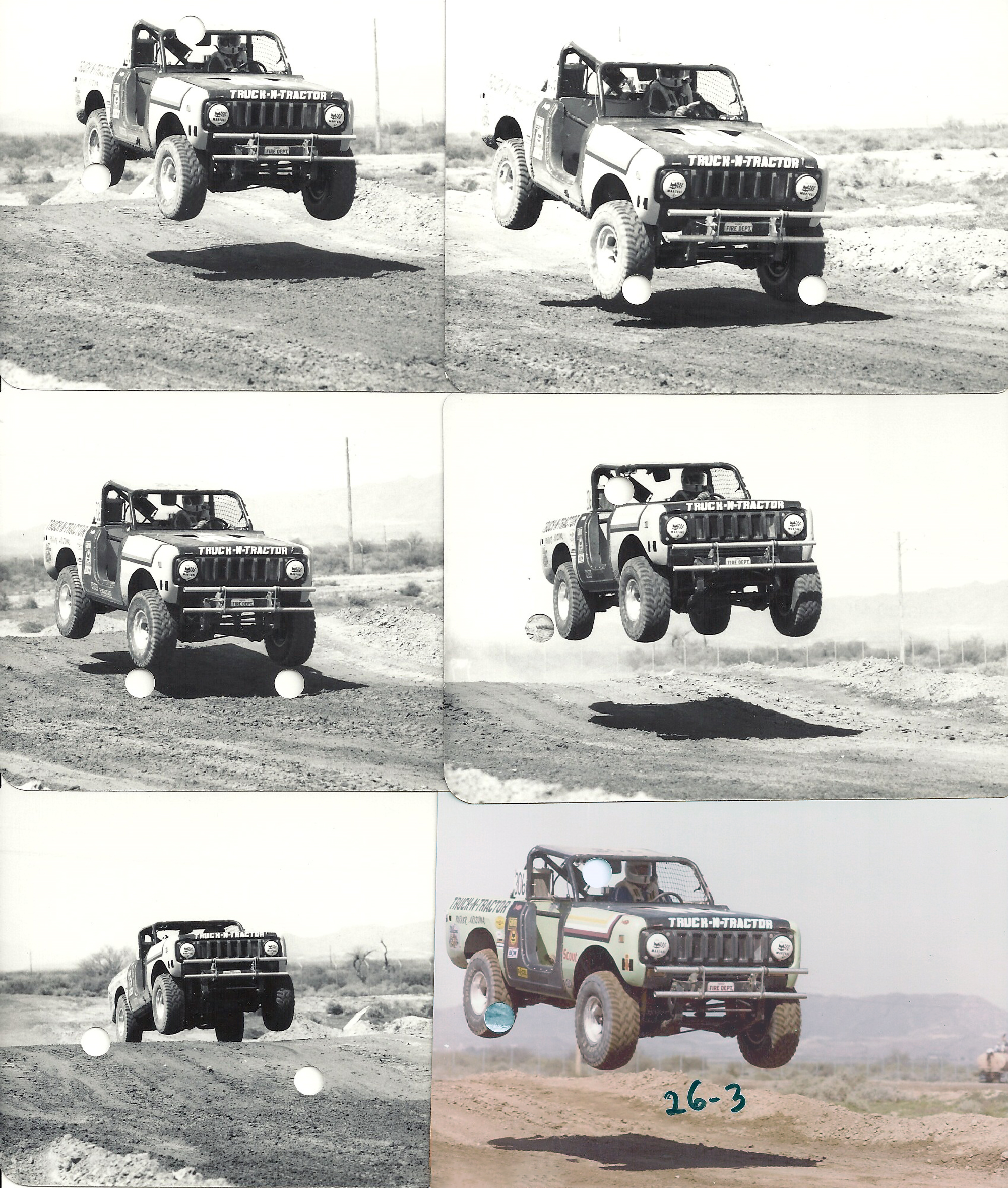
Demise and resurrection
The desert racing venture was deemed a success by the marketing department. “During the first full year of racing support, we received what we estimated to be between $2.5 million and $3.5 million dollars’ worth of free media editorials, articles, photos, and mentions,” wrote Bakkom. “This support cost us $150,000.” Brand awareness among first-time buyers increased 27 percent. But it wasn’t enough to save the Scout brand.
The factory supported Jones, Balch, Boone, and Howarth into the 1980 racing season, but in May of that year, International Harvester had announced plans to divest the Scout division; a sale never came to fruition, and the production line shut down for good in October. Winning on Sunday didn’t mean much if there was nothing to sell on Monday.
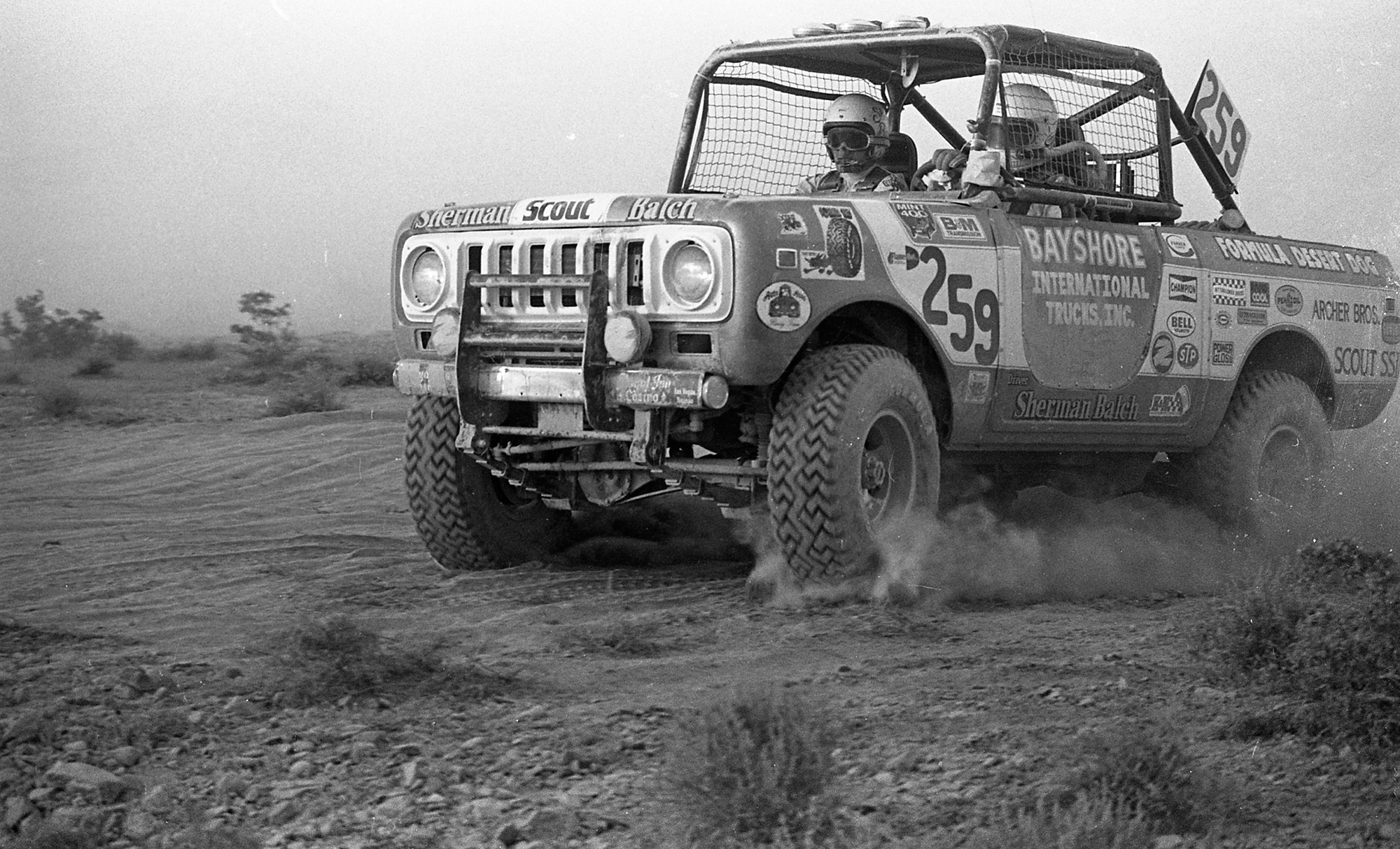
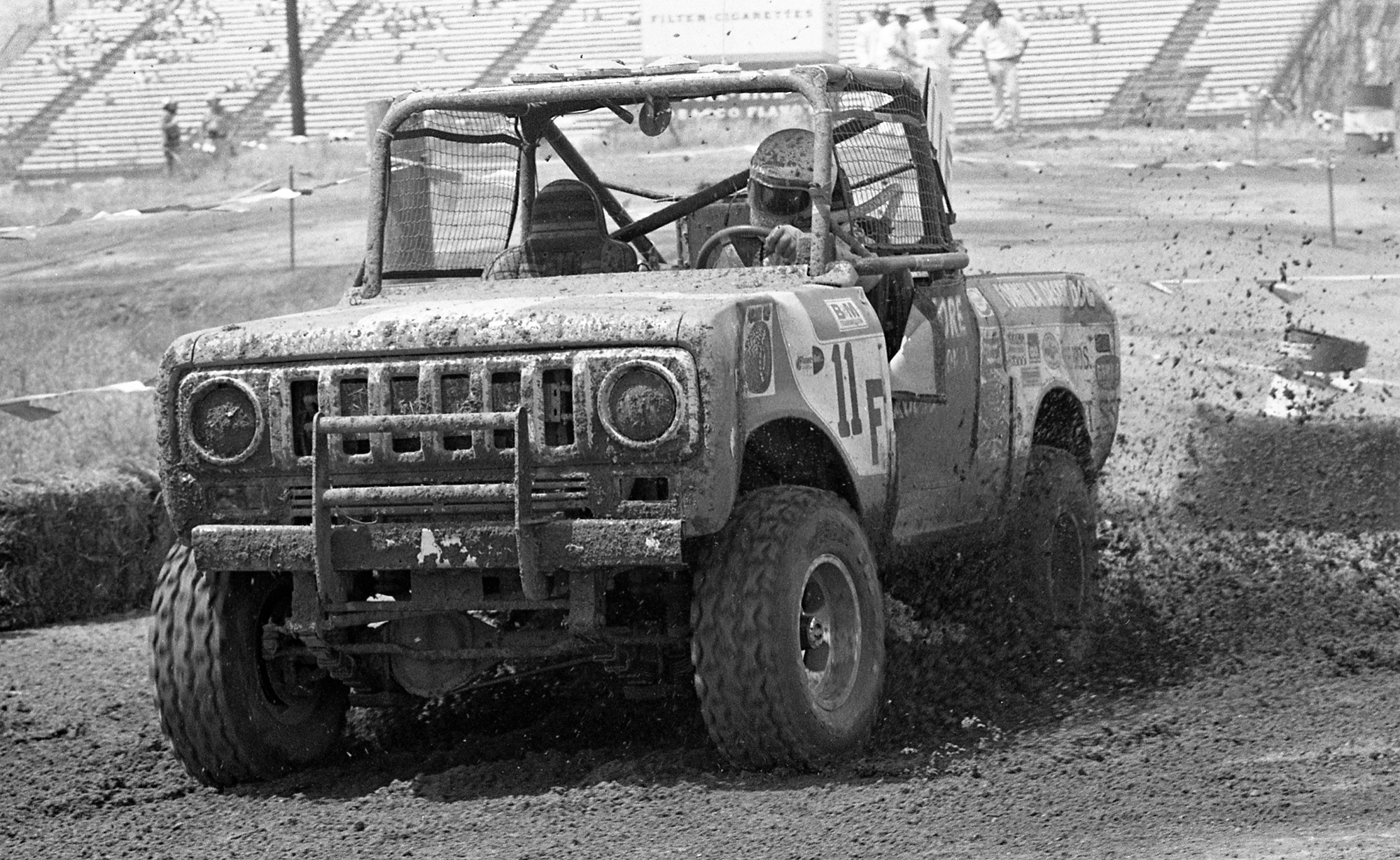
Several factory racers cobbled together their own sponsorship deals and continued to enter Scout trucks in major offroad events until 1982, but by then, the aging trucks were no longer a match for newer, factory-supported entries from other manufacturers. It would be several decades before the National Off Road Racing Association would resurrect the Mexican 1000®, a forerunner of the Baja 1000, now positioned as an inclusive event that welcomes vintage rigs and restomods like Sean Barber’s 1976 Scout Terra — a story whose next chapter will be written in a few short weeks.
Super Scout, Scout, Scout II, and Scout Terra, are registered trademarks and trademarks of Scout Motors Inc. All other trademarks are the property of their respective owners.

Visit our Scout Community forum and join the conversation on this story.


